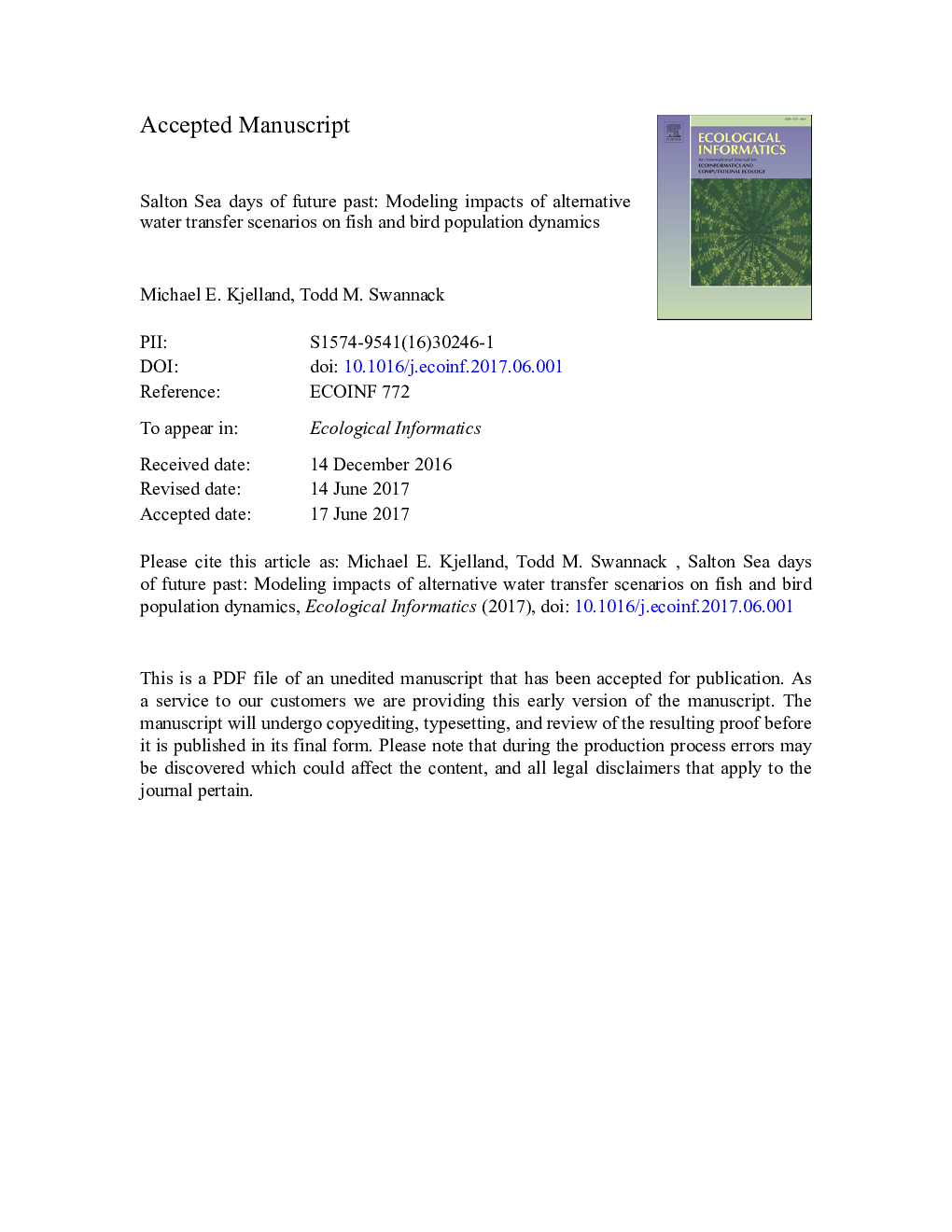| کد مقاله | کد نشریه | سال انتشار | مقاله انگلیسی | نسخه تمام متن |
|---|---|---|---|---|
| 8845873 | 1617191 | 2018 | 71 صفحه PDF | دانلود رایگان |
عنوان انگلیسی مقاله ISI
Salton Sea days of future past: Modeling impacts of alternative water transfer scenarios on fish and bird population dynamics
ترجمه فارسی عنوان
روز دریای سلطن دریای آینده: مدل سازی تأثیرات سناریوهای انتقال آب جایگزین بر دینامیک جمعیت ماهی و پرندگان
دانلود مقاله + سفارش ترجمه
دانلود مقاله ISI انگلیسی
رایگان برای ایرانیان
کلمات کلیدی
مدل سازی اکولوژیکی، دینامیک جمعیت، دریای سلطان مدل سازی شبیه سازی، انتقال آب،
موضوعات مرتبط
علوم زیستی و بیوفناوری
علوم کشاورزی و بیولوژیک
بوم شناسی، تکامل، رفتار و سامانه شناسی
چکیده انگلیسی
The Colorado River Quantification Settlement Agreement (QSA) of 2003 gives urgency for studying the environmental consequences of the cessation of mitigation water transfers to the Salton Sea. The Salton Sea Stochastic Simulation Model (S4M) is a spatially-driven, stochastic, simulation model representing water flow, i.e., water volume and quantity of Total Dissolved Solids and Phosphorus, in the Lower Colorado River Basin, Mexicali Valley, and the Salton Sea Basin. The S4M is formulated as a compartment model based on difference equations with a daily time step using STELLA® v8.0. The model was developed, evaluated, and applied to simulate the potential effects on the population dynamics, i.e., natality, mortality, emigration, and immigration, of selected fish and avian species at the Salton Sea under two different scenarios: 1) QSA water transfers to Sea end after 2017 and 2) QSA water transfers continue at 2017 levels. Oneway ANOVAs were performed for the water quantity, water quality, and selected variables involving the fish and bird population dynamics under the two water transfer scenarios. Results indicate that if cessation of the QSA water transfers after 2017 occurs, then fish and bird populations will be significantly (PÂ <Â 0.05) and negatively impacted by year 2024, compared to continuing the QSA water transfers. Further, if no restoration action is taken in stabilizing the Sea elevation and reducing salinity but continuing QSA water transfers (at 2017 levels), i.e., scenario 2; results indicate that Salton Sea avian and fish population dynamics will be negatively impacted, although somewhat delayed.
ناشر
Database: Elsevier - ScienceDirect (ساینس دایرکت)
Journal: Ecological Informatics - Volume 43, January 2018, Pages 124-145
Journal: Ecological Informatics - Volume 43, January 2018, Pages 124-145
نویسندگان
Michael E. Kjelland, Todd M. Swannack,
